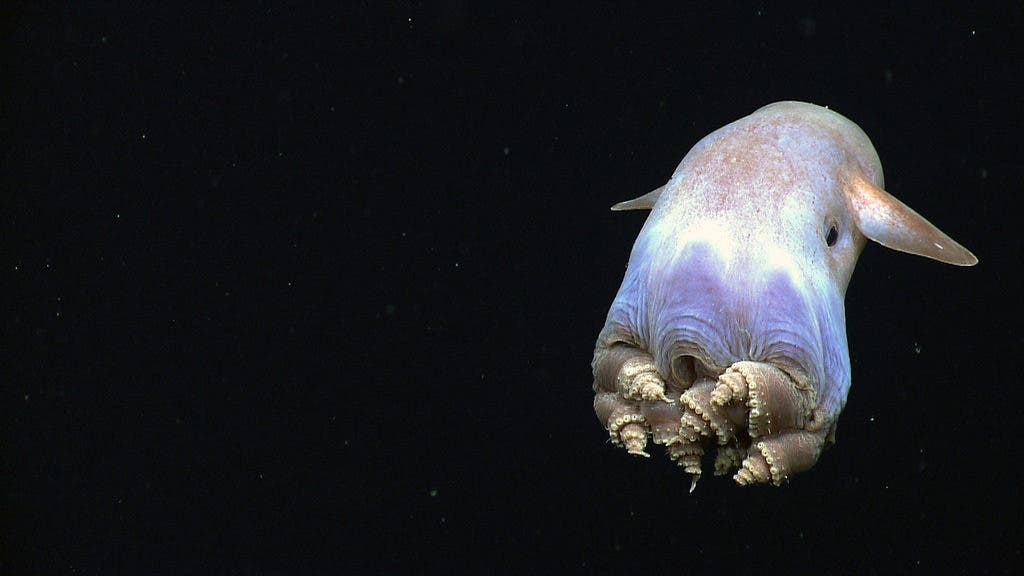When most creatures are sent into this world, they don’t have the capacity to take care of themselves. Their body is insufficiently developed, their mind is still a work in progress, and they certainly don’t have the ability to hunt. But the Dumbo octopus is different, researchers have learned. Dumbo octopus hatchlings are basically miniature versions of adults, emerging with a fully formed body, a complex nervous system, and the ability to navigate their surroundings.

The Dumbo octopus is a strange animal. We don’t know that much about it, largely because it generally lives at depths of 3,000 to 4,000 meters (9,800 to 13,100 ft), with some living up to 7,000 meters (23,000 ft) below sea level — the deepest of any known octopus. The creature takes its name from Disney’s fictional elephant Dumbo, due to the prominent ear-like fins located above each eye, which look like Dumbo’s giant ears. But these prominent fins do more than just raise similarity with a fictional elephant: they propel the octopus through unique, flapping motions.
It’s not easy to study a creature that spends most of its time kilometers beneath the surface, so researchers were thrilled when they came across the first Dumbo eggs ever observed.
Tim Shank at Woods Hole Oceanographic Institution first noticed one in 2005. As he was working with remotely operated vehicles (ROVs) to explore the Northwest Atlantic, he observed what appeared to be tan-colored golf balls attached to coral branches. They were too interesting to just pass by, so he collected a few.
“With each successive collection, it became apparent that this was some sort of an egg case,” Shank says. “The first few were open and empty, the next two contained a white gelatinous mass within, and the final collection yielded the specimen described in the paper.”
Most of them were cracked (the octopus had already hatched), but one was still intact. So he took it inside the lab, placed it in a bucket in a cold room that mimics its natural environment, and observed it.
The egg started to crack, and the tiny octopus peaked its head.
“Once the fins were observed while it was still in the bucket, it was clear that it was a ‘dumbo’ octopod,” says Elizabeth Shea at the Delaware Museum of Natural History.
https://www.youtube.com/watch?v=CNbzrl2RRcA
At first, it didn’t move much, but after a while, it started to swim around, in the video you can see above. Researchers were quite surprised to see just how well the octopus navigated its surroundings. Seemingly fully formed right from the start, the hatchling can see and chemically sense its environment, and an internal yolk sac also gives it a little time to successfully capture a first meal. However, it seems perfectly competent to already hunt on its own.
“The virtual exploration and 3D reconstruction of the internal anatomy of this deep-sea creature was particularly revealing,” says study co-author Alexander Ziegler from Rheinische Friedrich-Wilhelms-Universität Bonn in Germany. “I was impressed by the complexity of the central nervous system and the relative size of fins and the internal shell. However, for me as a zoologist, the most interesting aspect of our discovery remains the close interaction between the dumbo egg and the deep-sea coral host.”
Dumbos typically hover above the sea floor, where they look for worms, crustaceans, or other small creatures they can hunt. It’s intriguing that they hatch so well-formed, but what researchers are most interested in now is establishing the environmental relationship between the octopus and the corals which host its eggs.
“We knew that adults are predominantly benthopelagic [living and feeding near the seafloor, as well as in mid waters or nearer to the surface], that females lay eggs on the ocean bottom, and that octopod eggs come in a variety of sizes, colors, and textures,” Shea says. “Our work connects the dots between a particular egg, a particular coral, and a particular octopod.”
Shea et al.: “Dumbo octopod hatchling provides insight into early cirrate life cycle” http://www.cell.com/current-biology/fulltext/S0960-9822(18)30034-4 , DOI: 10.1016/j.cub.2018.01.032.


